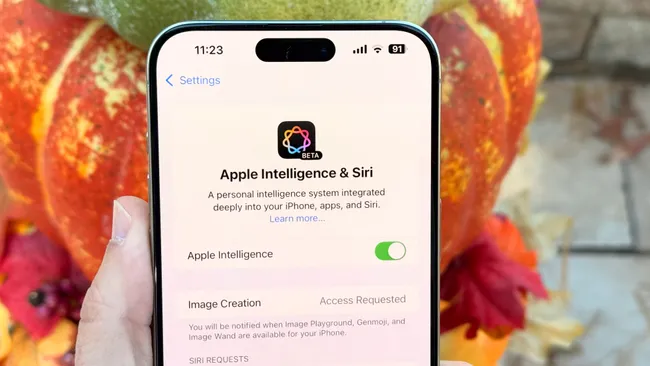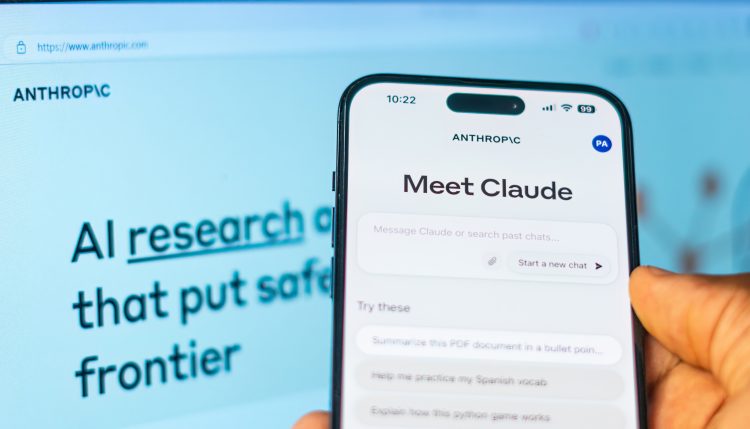NEWS
-
iOS 18.3: A Key Step Forward in Apple Intelligence, But More Work Ahead
iOS 18.3 may not be a major update in terms of new features, but it marks a significant advancement for Apple Intelligence, the suite of AI-powered tools Apple has been gradually rolling out. While this update mainly fine-tunes existing features, the most notable change is the default activation of Apple Intelligence, which was previously optional in iOS 18.1.

However, despite this shift, Apple Intelligence is far from perfect. Some of its features are already well-integrated, while others are still in need of refinement. For example, Apple has temporarily disabled AI-generated notifications for news and entertainment apps due to inaccuracies in the summaries. This move highlights that, while AI tools can be powerful, they are not yet fully polished and require further training before they can be trusted with more critical functions.
On a positive note, iOS 18.3 also introduces several enhancements to existing AI capabilities. One of the most notable changes is that AI-generated summaries, such as those for text messages, now appear in italicized text on the lock screen, making them easier to read at a glance. For iPhone 16 users, Visual Intelligence can now recognize objects like plants and animals and even add events to the Calendar app from images of flyers or posters. These updates demonstrate Apple’s ongoing commitment to refining its AI features, ensuring that they continuously improve rather than stagnate after release.
>>>ADP-120RH for BenQ EX2710Q LCD Monitor
However, Siri—the centerpiece of Apple’s AI ecosystem—has seen only incremental improvements so far. While the assistant has become better at understanding context and handling follow-up questions, the most anticipated features, such as on-screen awareness and cross-app interactions, are still missing. These improvements are expected to arrive in iOS 18.4 later this spring. Until then, Siri still lags behind competitors like Samsung’s Galaxy S25, which already boasts a more advanced AI assistant capable of performing actions across multiple apps.
In fact, Samsung has raised the bar by introducing features like the Gemini assistant, which enables cross-app commands, and a personalized "Now Brief" screen that displays contextually relevant information, such as upcoming appointments and traffic conditions. While Apple may not have rushed to implement these features, it will need to match or exceed Samsung's efforts when it does launch its own solutions.
In summary, while iOS 18.3 makes significant strides in advancing Apple Intelligence, it’s clear that much work remains. Apple is actively refining its AI tools, but full-fledged functionality and personalization, particularly in Siri, are still in development. As more updates roll out, users can expect even more advanced features, but for now, the journey is far from complete. With expanded language support coming in April, Apple Intelligence will soon reach more users, opening the door for even more enhancements in the near future.
PR -
GeForce RTX 5090: Unveiling the Future of Gaming and Creative Power with New RTX 5090 Ti Rumors
Nvidia has officially launched the much-anticipated GeForce RTX 5090, the flagship graphics card of its latest GeForce 50 series, at CES 2025. This powerhouse has already begun making waves in the world of gaming and creative professionals. However, just before its release, rumors have emerged regarding a possible RTX 5090 Ti variant that could feature cutting-edge upgrades, including a fully enabled GB202-200-A1 GPU and dual 12V-2×6 power connectors, which could theoretically push the power requirements to an astonishing 1,200 watts.

These rumors began circulating after a prototype image surfaced on the Chinese tech forum, Chiphell. According to a report from ComputerBase, this prototype could have a GB202-200-A1 GPU with 24,576 shaders, an impressive increase in performance. This chip would feature 192 active streaming multiprocessors, suggesting it is a fully unlocked version of Nvidia's GB202 architecture. Along with the enhanced GPU, speculation points to memory upgrades as well: the RTX 5090 Ti could sport 32GB of GDDR7 memory, clocked at a remarkable 32Gbps instead of the RTX 5090’s 28Gbps, pushing the bandwidth beyond 2TB/s.
Adding fuel to the fire, ComputerBase uncovered shipping documentation from NBD Data listing a mysterious graphics card with 96GB of GDDR7 memory marked as “for testing.” This suggests the presence of a high-end professional model, which might well be the RTX 6000 Blackwell — Nvidia's next-gen workstation graphics card. The large memory capacity and performance indicate this model is tailored more for specialized tasks like AI processing and other data-intensive applications, rather than standard gaming or creative workloads.
>>>VB18 Replacement Battery for Godox V860II V850 V860C V860N Speedlite Flash
As for the GeForce RTX 5090, it is already a beast in terms of performance. With 32GB of GDDR7 memory arranged in sixteen 2GB modules and a 512-bit memory interface, the RTX 5090 delivers substantial bandwidth, making it a top choice for gaming, video editing, and professional design. However, if Nvidia were to use 16GB 3GB chips instead of the 2GB variants, the 48GB memory configuration would be entirely feasible. This could push the RTX 5090 even further, but the true standout would be the 96GB memory configuration mentioned in the shipping records.
The 96GB setup suggests a dual-sided memory layout, with chips arranged in a "clamshell" configuration across the front and back of the card. This design could be a feature of the professional-grade RTX 6000 Blackwell, doubling the memory capacity of the current RTX 6000 Ada, the world’s most expensive consumer GPU, while leveraging a 512-bit memory bus for optimal bandwidth.
What’s Next? The Blackwell Series and AI-Optimized Cards
The Nvidia Blackwell series, slated for an official debut at the GPU Technology Conference (GTC) 2025, is expected to take the graphics card market by storm. This lineup will likely include both consumer and workstation models, with the RTX 6000 Blackwell emerging as the flagship professional card.
While 96GB of GDDR7 memory might seem excessive for typical gaming or creative workloads, it opens up new possibilities for AI tasks and machine learning. Nvidia is likely to introduce an AI-optimized version of the RTX 6000 Blackwell, catering specifically to enterprises and research institutions that require massive memory and computational power. As we approach March 2025, more details about this groundbreaking technology will undoubtedly surface, offering a glimpse into the future of high-performance computing.
>>>ATS065T-P120 for TT Electronics ATS065T-P120
-
Samsung Project Moohan: A New Era of AI-Driven XR Headsets
At the Galaxy Unpacked 2025 event held in San Jose, California, Samsung unveiled its prototype XR headset — Project Moohan. The device is aimed squarely at competing with the likes of Apple's Vision Pro and Meta’s Quest, but it comes with a unique advantage: a powerful AI assistant designed to elevate the extended reality (XR) experience. Project Moohan integrates cutting-edge artificial intelligence with immersive XR technology, setting a new standard for virtual and mixed reality devices.

AI-Powered Experiences: Revolutionizing Interaction in Extended Reality
One of the most exciting features of Project Moohan is its AI assistant. This assistant isn't just a voice command system, but a fully interactive tool that helps users seamlessly navigate the XR environment. Imagine a user asking about a football jersey they saw, and the AI not only identifies the team but also places them inside a virtual football field. This experience goes far beyond traditional static information display; it immerses the user in an interactive, 3D environment based on real-time queries. For example, users can ask the AI questions related to sports, fashion, or history, and the system will pull relevant data from various sources, creating an immersive experience that brings information to life. This combination of AI and XR visualization is poised to redefine how we interact with digital content and could revolutionize how we use XR technology in education, entertainment, and work.
The integration of AI in Project Moohan takes inspiration from Tony Stark's Jarvis — an assistant that doesn’t just answer questions but actively aids in decision-making and real-time visualization. Whether it’s summarizing key points from a case file or giving live data on a sports match, the AI assistant provides users with not only answers but also context, bringing them closer to the experience than ever before.
>>>EB-BN750BBE Replacement Battery for Samsung Galaxy Note 3 Neo SM-N7505
Samsung & Google Collaboration: A Unified Android XR Ecosystem
Project Moohan’s software platform is another game-changer. Developed in collaboration with Google, the headset runs on the Android XR platform, which aims to revolutionize the mixed-reality experience. This collaboration is significant because it brings together two tech giants with decades of experience in hardware, software, and AI to create an open and expandable ecosystem for XR applications.
The Android XR platform will allow users to run not only XR-specific apps but also conventional Android apps designed for smartphones. This means users won’t have to choose between their favorite apps and XR experiences — they can seamlessly run apps from Adobe, Naver, and Major League Baseball alongside immersive XR content. Samsung's AI assistant further enriches this ecosystem by enabling a smooth communication flow between the headset, smartphones, and even home appliances. This will allow users to control their devices without breaking immersion, making for a more efficient and cohesive smart environment.
By building an expandable XR ecosystem, Samsung and Google are setting the stage for broader XR adoption. Rather than relying solely on hardware innovation, the companies are also ensuring that the platform will support a wide array of apps, from entertainment to business tools, allowing XR to fit into a variety of use cases, from professional environments to home entertainment.
>>>EB-BX828ABE Replacement Battery for Samsung EB-BX828ABE
Hardware Innovation: Lightweight, Customizable, and Affordable
While Project Moohan’s AI features and software integration are impressive, the hardware is no less significant. The prototype of Moohan feels remarkably lightweight compared to other XR headsets on the market, especially when compared to Apple’s Vision Pro, which weighs around 600 grams. Despite the lighter build, Samsung has made sure that the headset is comfortable to wear. It includes customizable light seals, which allow users to choose between a tighter seal for full immersion or a gentler seal for those who may experience motion sickness.
The fact that Samsung is also working on smart glasses as part of the Moohan lineup shows its dedication to making XR technology more practical for everyday use. These glasses are designed to provide a seamless experience for users, allowing them to switch between XR and real-world vision as needed. This approach underscores Samsung’s vision of connecting XR with smartphones and home appliances, creating a more holistic and immersive experience.
What really sets Project Moohan apart from its competitors, though, is its potential price point. While the exact price has not been confirmed, industry insiders expect it to be significantly more affordable than Apple’s $3,499 Vision Pro, making it more accessible to a wider range of consumers. The combination of lightweight design, customizability, and affordable pricing makes Moohan an attractive option for both early adopters and mainstream users.
-
Anthropic's New Citations Feature for Claude: A Step Toward Enhanced Accuracy and Trust
On Thursday, Anthropic introduced a new API feature called Citations, designed to help Claude models avoid the common issue of confabulations or hallucinations by linking their responses directly to source documents. This new tool allows developers to upload documents (PDFs and plaintext files) into Claude’s context window, enabling the AI to automatically cite specific passages used in its answers.

How Citations Work
When the Citations feature is enabled, Anthropic’s API processes the user-provided documents by chunking them into sentences. These sentences, along with any additional context provided by the user, are then passed to Claude with the user’s query. The model will use this context to generate answers, referencing the specific passages it utilized.
As Anthropic explains, this feature has a wide range of potential applications, including:- Summarizing case files with source-linked key points
- Answering questions from financial documents with traced references
- Powering support systems that cite specific product documentation
In its internal testing, Anthropic found that Citations improved recall accuracy by up to 15 percent compared to custom citation systems built by users within prompts. Although a 15% improvement may seem modest, Simon Willison, a well-known AI researcher, highlighted the feature’s significance due to its integration of Retrieval-Augmented Generation (RAG) techniques. RAG is an approach where, after retrieving relevant portions of documents, the model generates an answer that includes these fragments, ensuring more accurate and contextually relevant responses.
>>>Li318991PVYTL Replacement Battery for Blackview Mega 1
Willison pointed out that while using citations helps verify accuracy, building a system that does so consistently is challenging. However, Citations seems to be a step in the right direction by integrating RAG techniques directly into the model. As Willison writes on his blog, “The core of the Retrieval Augmented Generation (RAG) pattern is to take a user’s question, retrieve portions of documents that might be relevant to that question and then answer the question by including those text fragments in the context provided to the LLM.” This setup helps mitigate the risk of models answering based on outdated or incorrect training data.
Early adopters of Citations have reported promising results. For instance, Thomson Reuters, which uses Claude to power its CoCounsel legal AI reference platform, expressed excitement about the potential of Citations to minimize hallucinations and increase trust in AI-generated content. In addition, Endex, a financial technology company, shared that Citations helped reduce source confabulations from 10% to zero, while also increasing the number of references per response by 20%.
Despite these promising results, Anthropic and other developers caution that relying on any language model to accurately relay reference information still carries inherent risks, especially when the technology is still evolving. The company itself emphasizes that this capability should be viewed as part of a broader effort to improve the reliability and trustworthiness of AI-generated content, and it may need further development and testing in real-world applications.
>>>01AC366 Replacement Battery for IBM Storwize V5000 V5010 V5030 Gen2
Pricing and Availability
Citations is available for Claude 3.5 Sonnet and Claude 3.5 Haiku models through both the Anthropic API and Google Cloud's Vertex AI platform. According to Anthropic’s token-based pricing, quoting text from a source document won’t count toward the output token costs. For instance, sourcing a 100-page document as a reference would cost around $0.30 with Claude 3.5 Sonnet or $0.08 with Claude 3.5 Haiku..
-
Galaxy S25 Series Introduces Satellite Connectivity via Snapdragon Satellite
The Galaxy S25 series, announced at Samsung's latest Unpacked event, is bringing a feature that flew somewhat under the radar: satellite connectivity. These are the first smartphones to support Snapdragon Satellite, Qualcomm’s new communication technology that enables users to send and receive messages via satellite in remote areas with no cellular coverage.

This feature is part of Qualcomm's Snapdragon 8 Elite chipset, specifically utilizing the Snapdragon X80 5G modem. While this is groundbreaking for users who find themselves in places with limited or no network access—like rural areas, mountainous regions, or on the high seas—Samsung has not yet activated the satellite functionality. The feature will be rolled out through a software update, so Galaxy S25 users will need to wait until it's ready to use.
However, the satellite connectivity will be region-dependent, and it's unclear how Samsung plans to price it once it's live. Given the reliance on satellite networks, it could be offered as part of a premium plan, or potentially at a cost for each use. The introduction of satellite communication on the S25 is poised to change how users stay connected, especially in places where traditional cell towers can’t reach.
Another point of interest is whether other devices with the Snapdragon 8 Elite chipset—from other manufacturers—will also gain access to Snapdragon Satellite. While the hardware is already integrated, Qualcomm has yet to announce if it will expand this feature to other phones or remain exclusive to the Galaxy S25 series. If the feature is made available to more devices, it could revolutionize communication for a broader range of smartphones, opening up entirely new possibilities for satellite-based messaging and communication on a global scale.
In conclusion, Snapdragon Satellite promises to provide a lifeline for users in remote locations, allowing them to stay connected even without traditional cellular networks. As Samsung prepares to roll it out via software updates, it will be interesting to see how this feature evolves, how Samsung structures its pricing model, and whether other Snapdragon 8 Elite-powered phones will follow suit. For now, Galaxy S25 owners can look forward to a major leap in connectivity—one that could potentially change how we communicate when far from the nearest cell tower.
